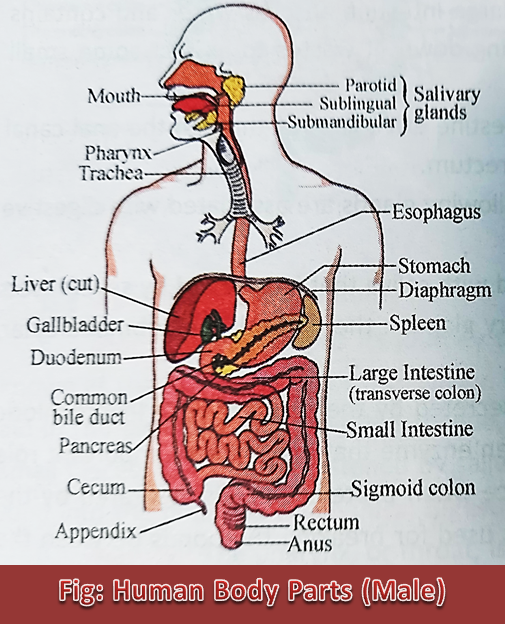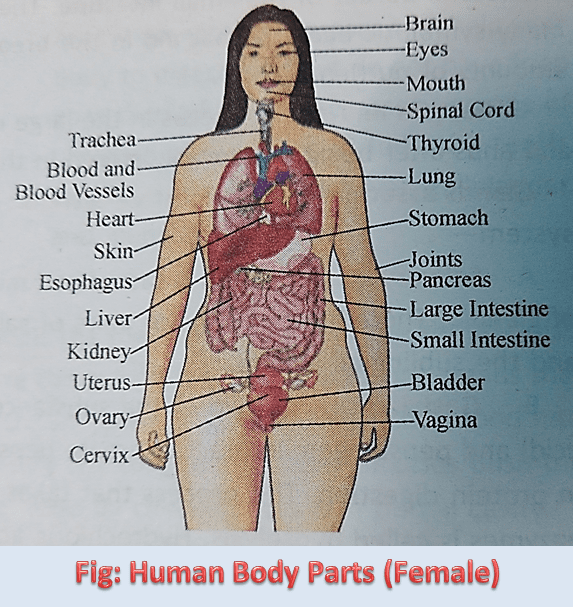Salivary Glands: Food is tested and mixed with saliva that is secreted by several sets of glands. There are three major pairs of salivary glands:
- Parotid
- Submandibular
- Sublingual

Gastric Glands: Two of the substances secreted by the stomach, HCL (Hydrochloric Acid) and pepsinogen, interact to create pepsin. It is an enzyme that plays a very important role in protein digestion. The process that takes place when proteins are disintegrated by the enzymes is called Hydrolysis.
Hydrochloric acid is used for breaking the bonds between the proteins. Next, the proteins are disintegrated into amino acids, which are molecules that play very important roles in metabolism.
Liver: The liver is a roughly triangular accessory organ of the digestive system located to the right of the stomach, just inferior to the diaphragm and superior to the small intestine. The liver weighs about 3 pounds and is the second largest organ in our body. The liver has many different functions in the body. But the main function of the liver in digestion is the production of bile and its secretion into the small intestine.

Gallbladder: The gallbladder is a small, pear-shaped organ located just posterior to the liver. The gallbladder is used to store and recycle excess bile from the small intestine so that it can be reused for the digestion of subsequent meals.
Pancreas: It is a large gland located just inferior and posterior to the stomach. It is about 6 inches long and shaped like a short, lumpy snake with its head connected to the duodenum and its tail pointing to the left wall of the abdominal cavity. The pancreas secrets digestive enzymes into the small intestine to complete the chemical digestion of foods.